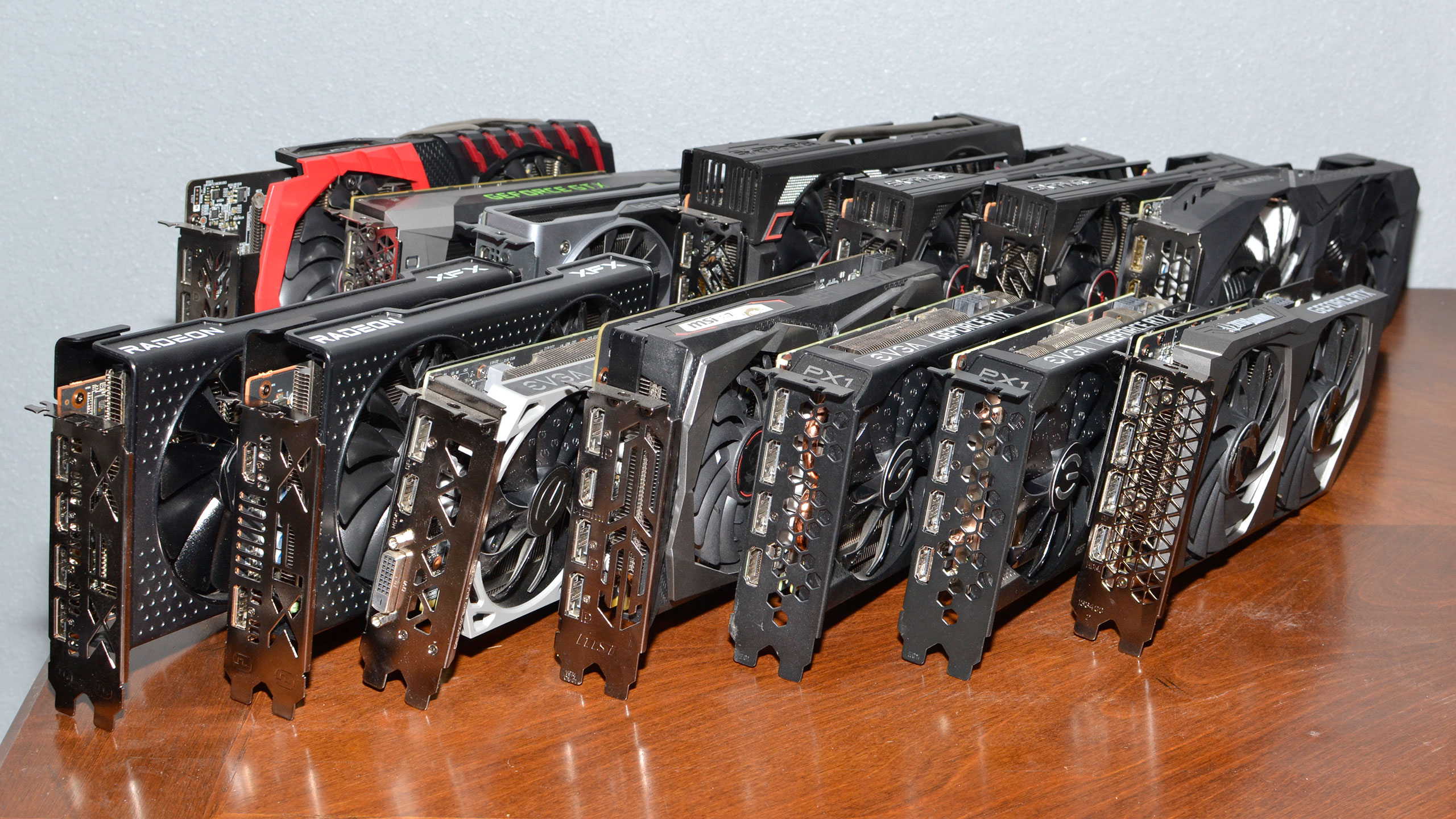Why you can trust Tom's Hardware
Zotac provided its RTX 3050 Twin Edge OC for this review, a fairly tame design by all appearances. While the card does include a factory overclock, the boost clock is only 1807MHz, 30 MHz higher than the reference clock. Zotac also has a non-overclocked Twin Edge that sticks to the 1777MHz reference clock and has a theoretical price of $249, but of course, all such cards are currently out of stock.
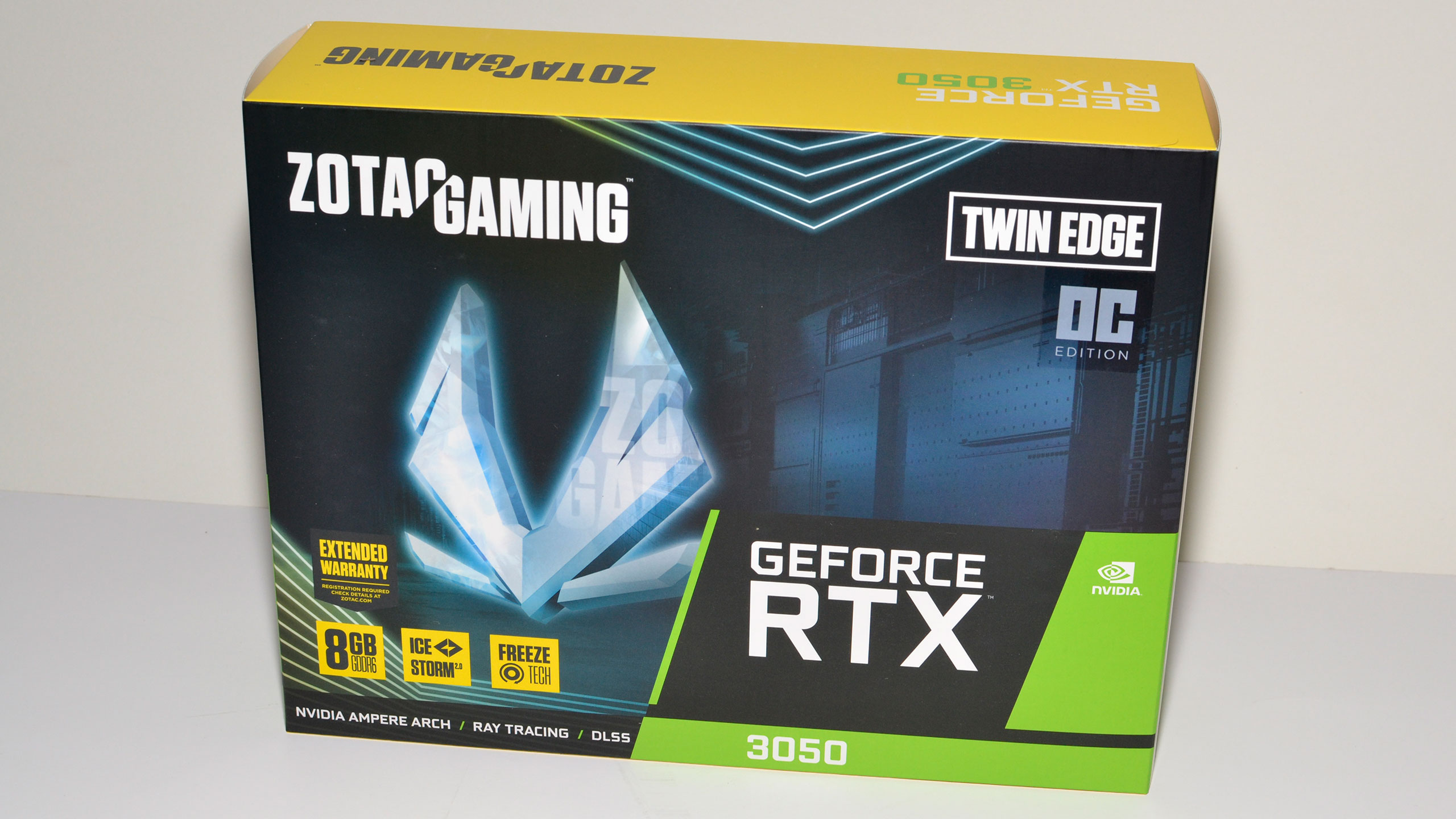
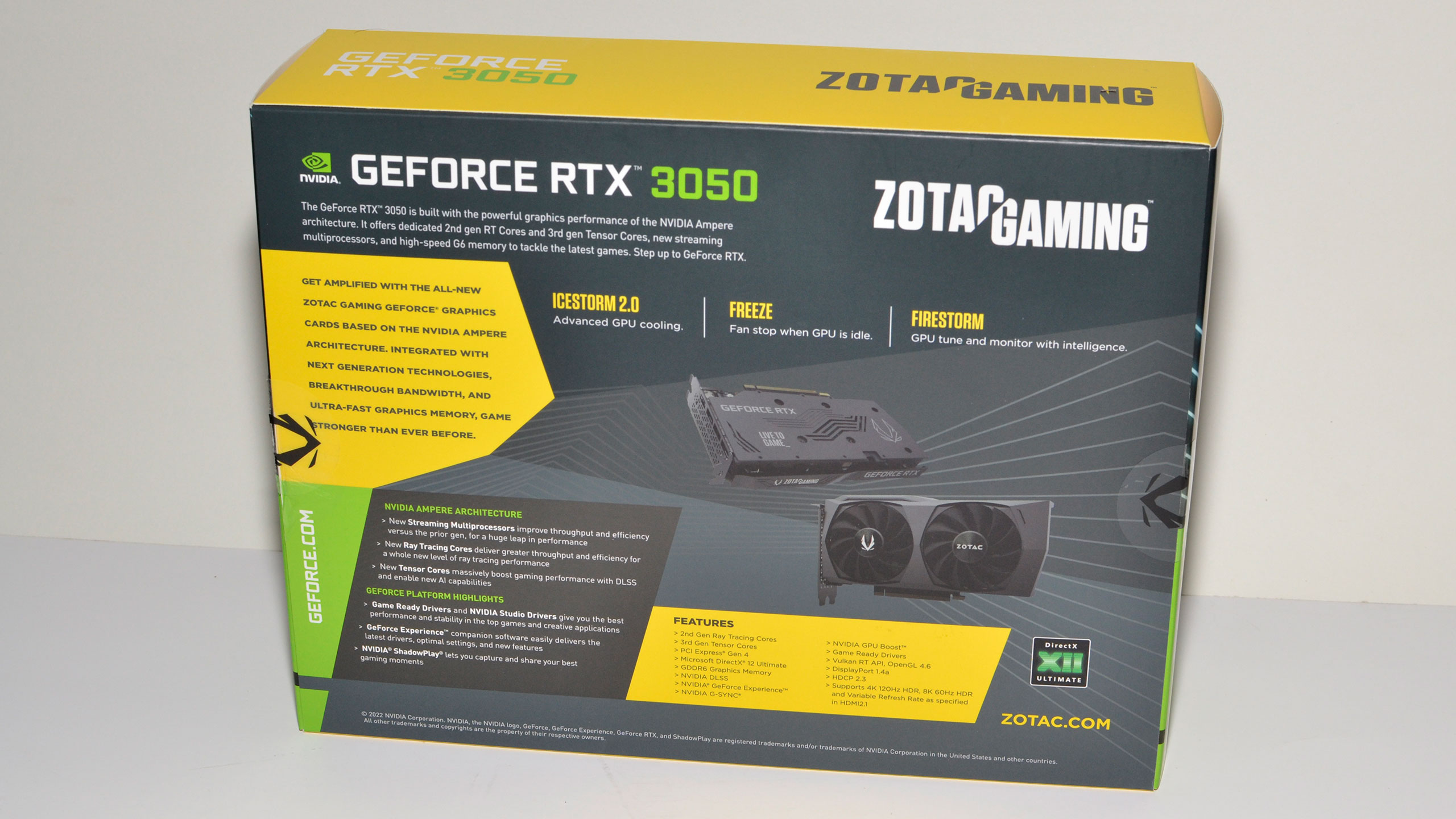
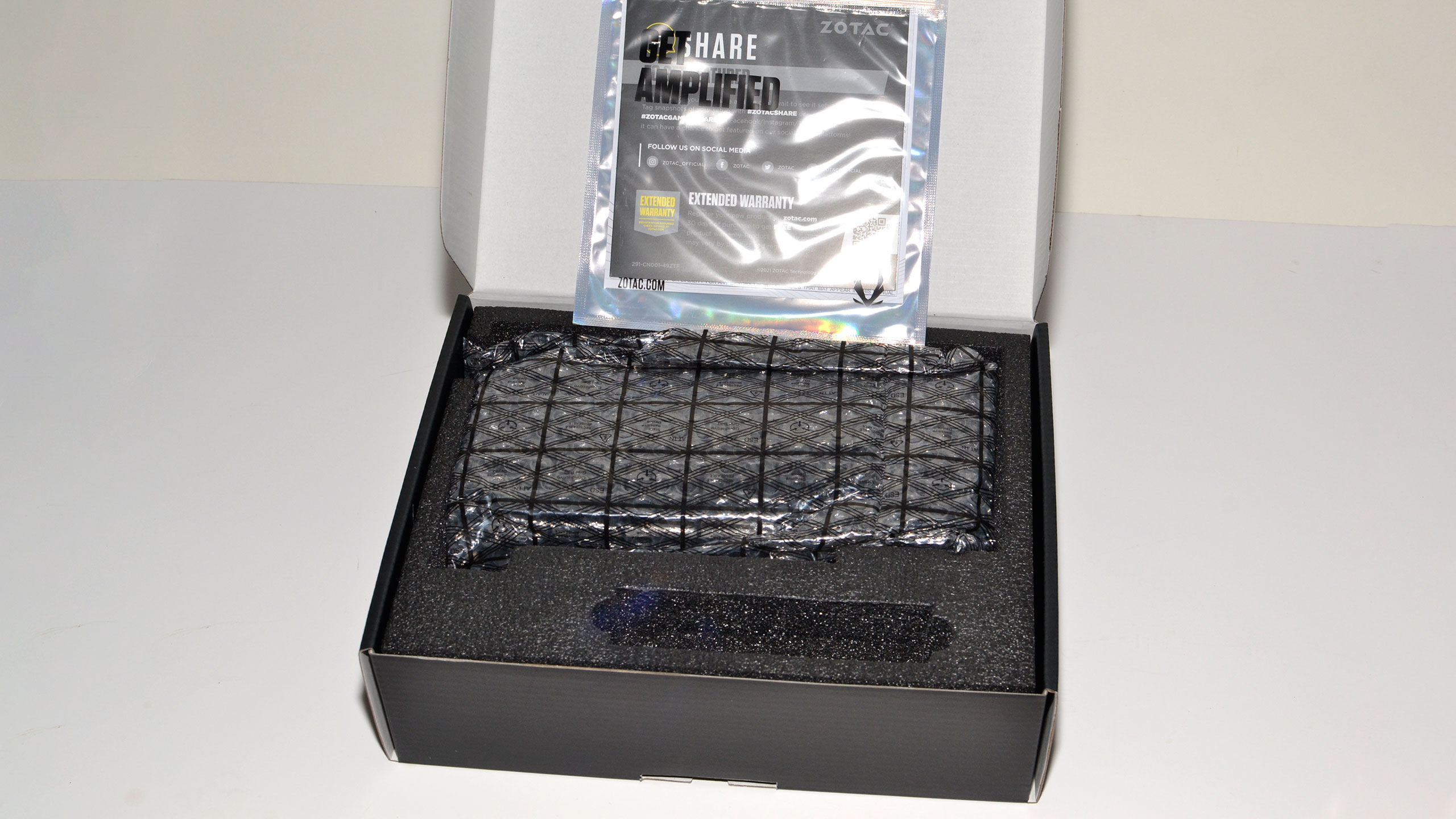
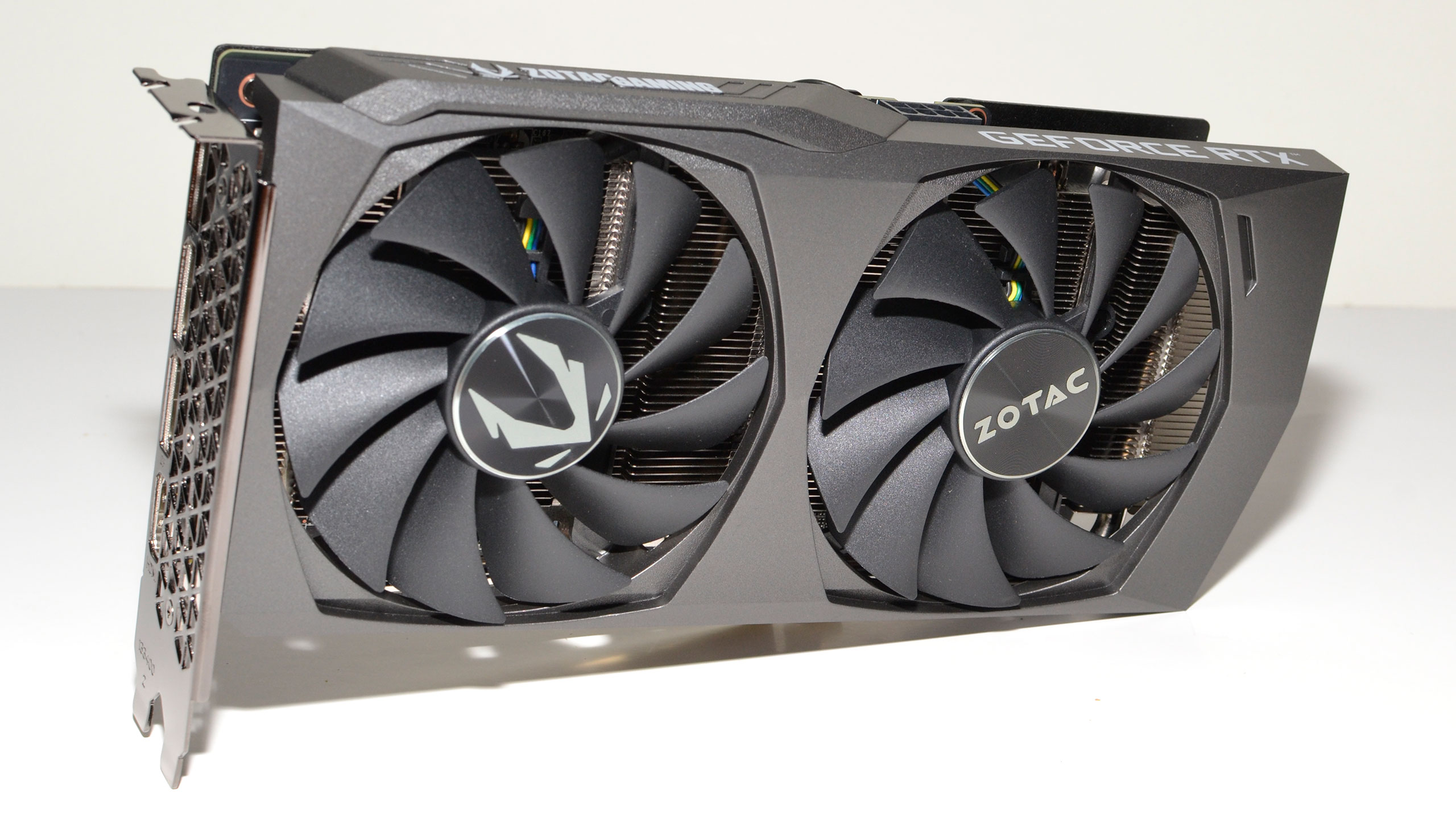
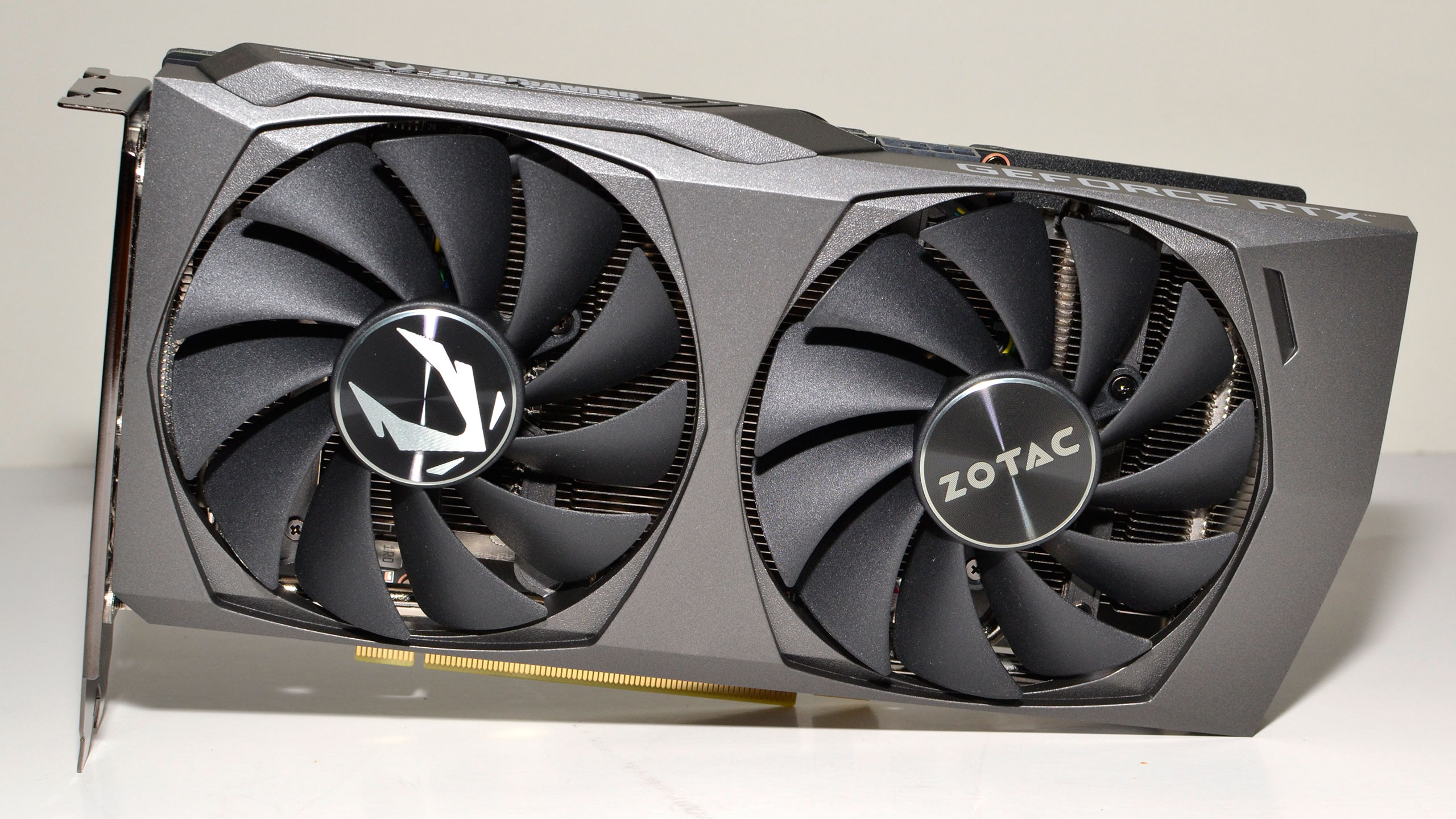
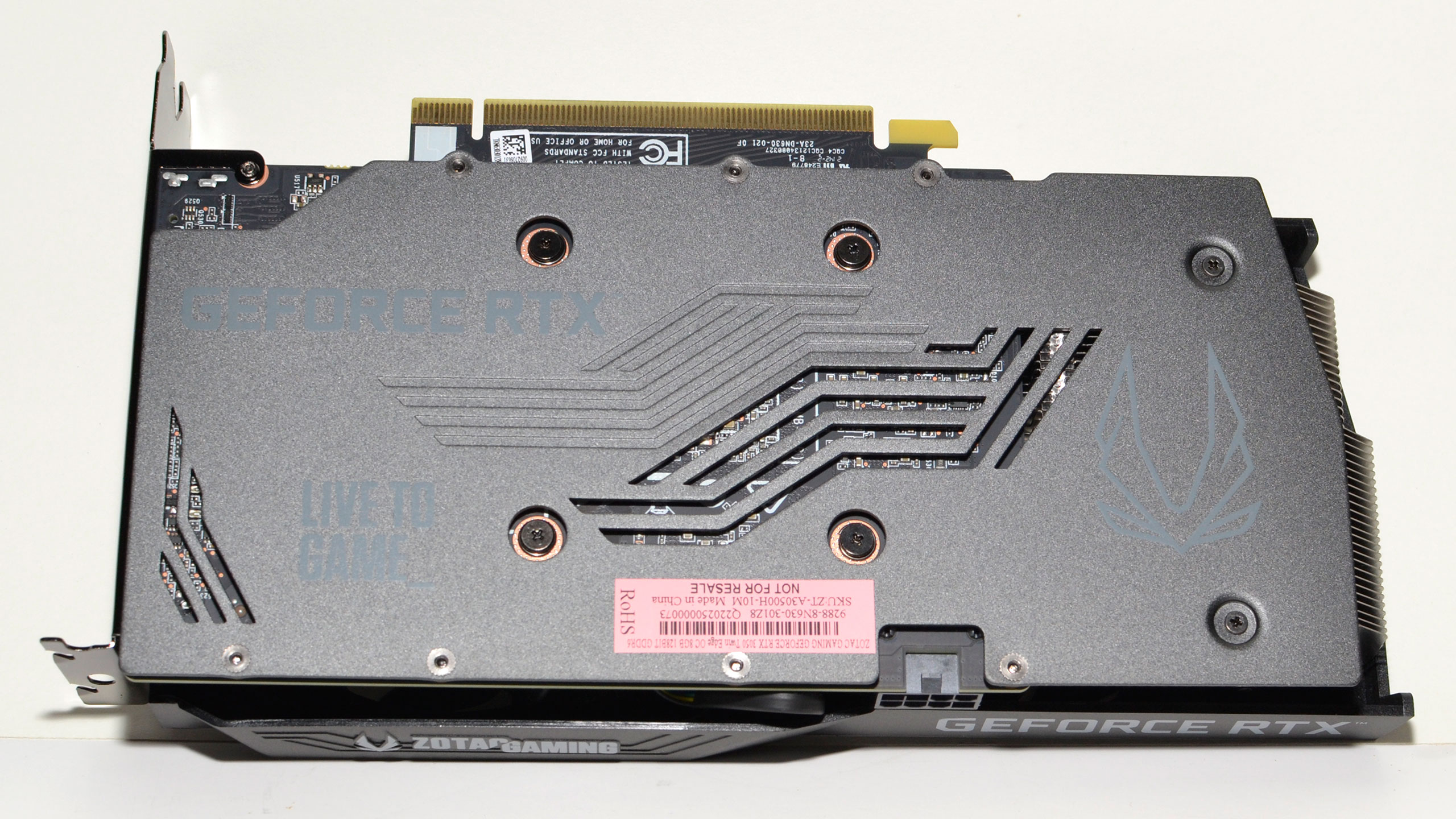

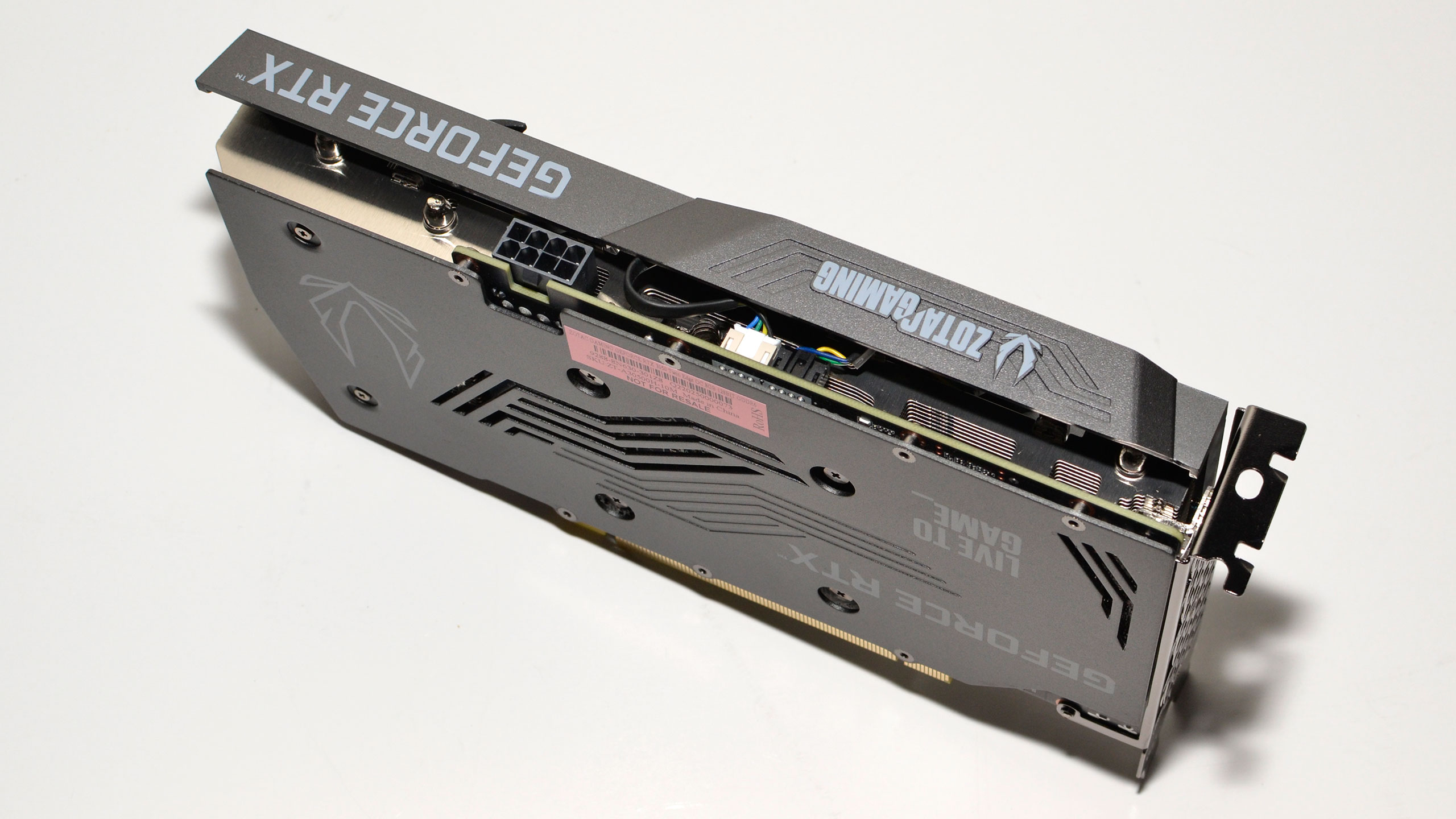
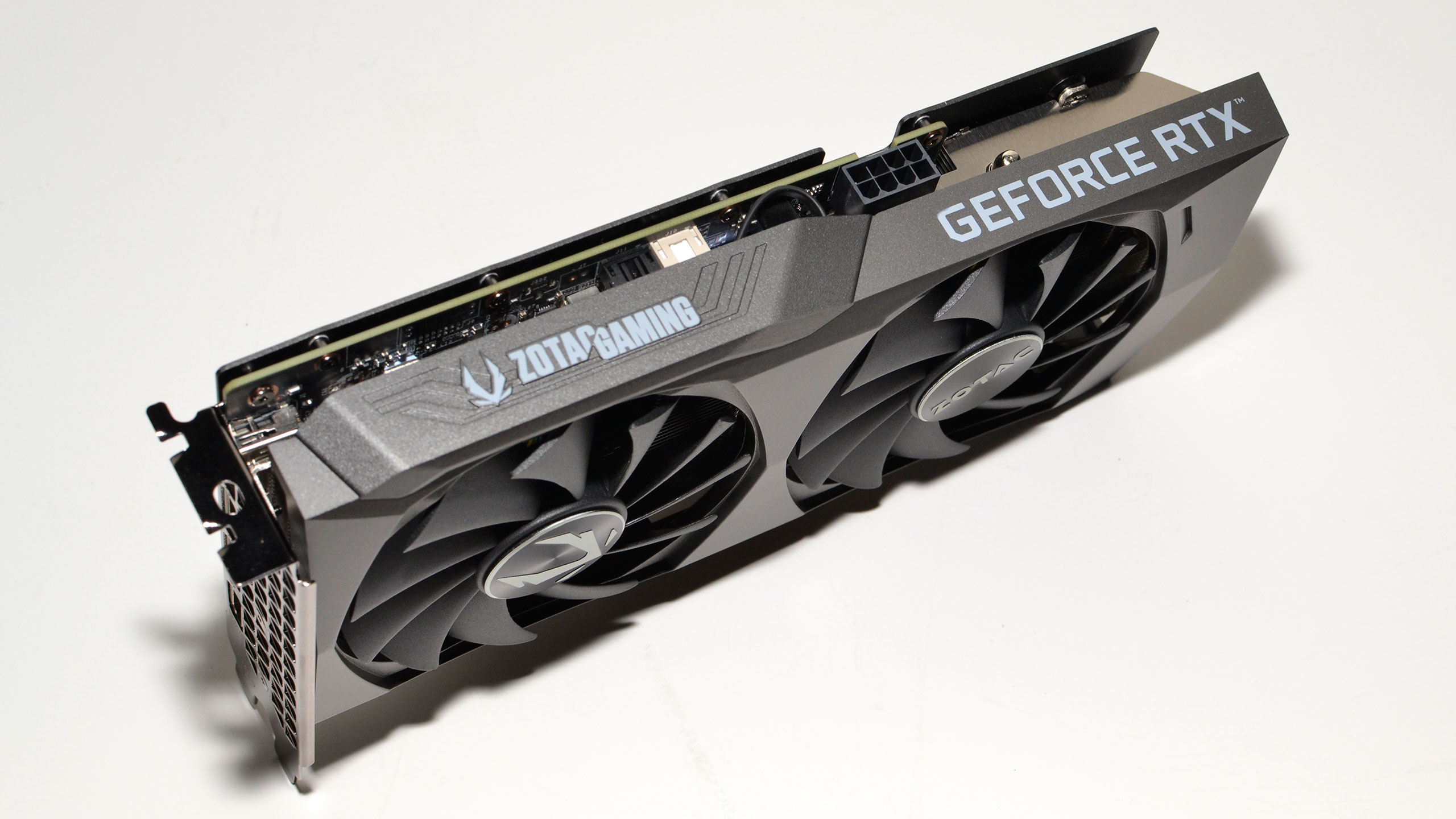
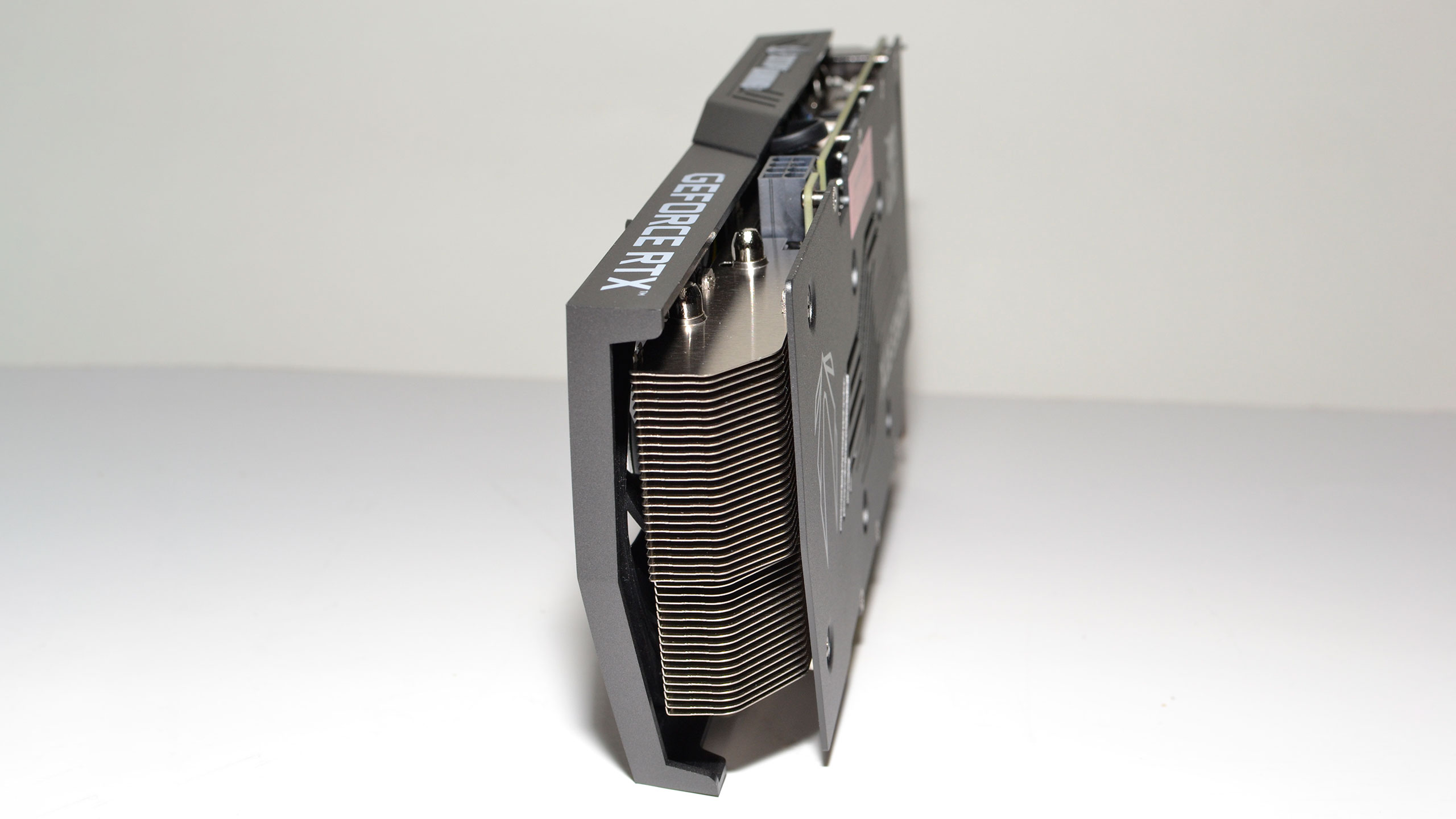
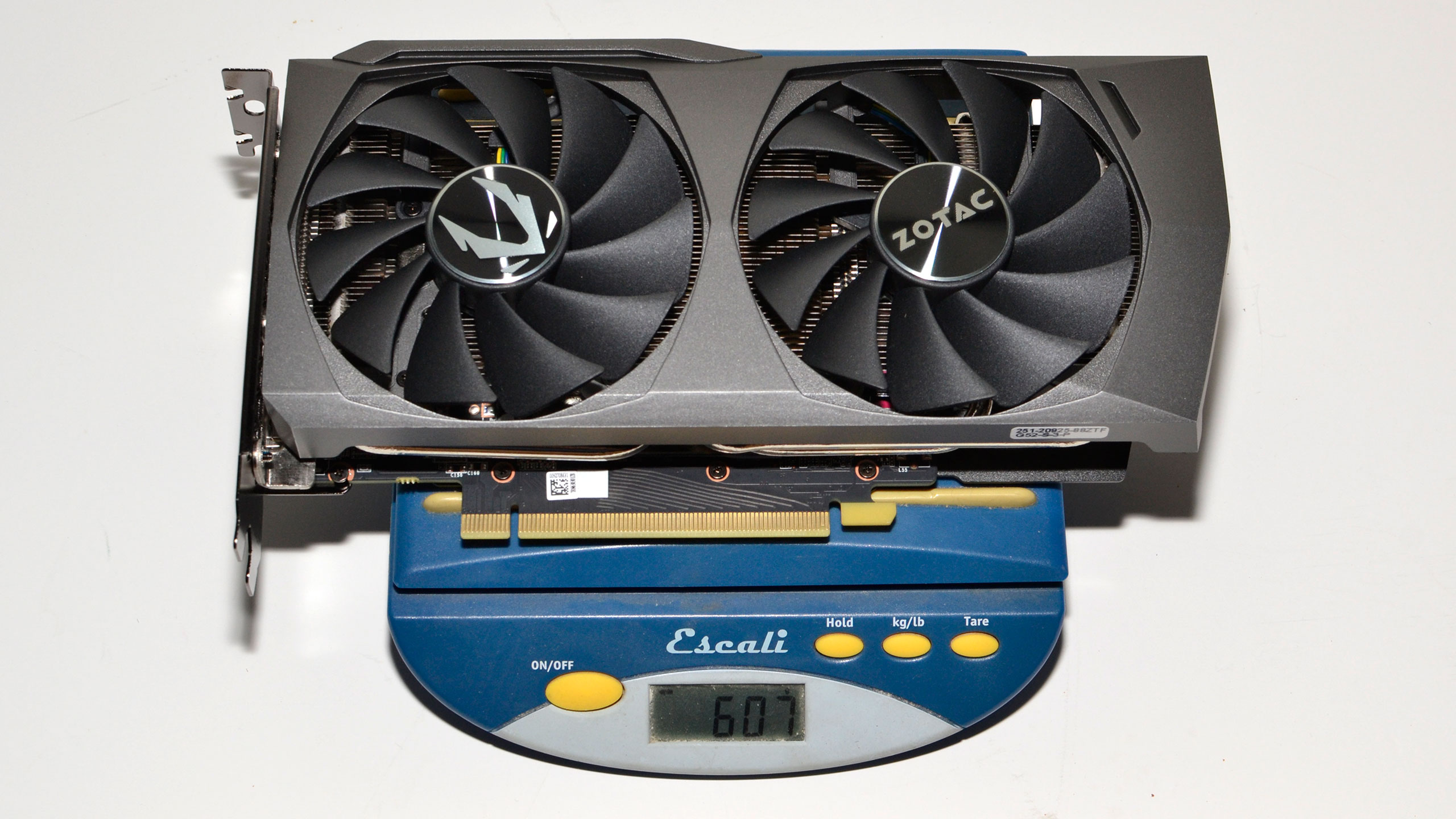
Zotac's card has overall dimensions of 222x115x40mm and a weight of 607g. That's slightly larger than the EVGA XC Black, but otherwise, the designs are quite similar. There's no bling and the card has dual 88mm fans that should provide similar cooling performance to the EVGA model. Power again comes courtesy of a single 8-pin PEG connector, and you get the same triple DisplayPort and single HDMI output options.
Possibly the biggest difference between the cards, other than the minor bump in clockspeed, is that Zotac's card does include a metal backplate to protect the components on the back of the card. It's not a huge deal, but it does account for the 80g difference in weight. It also adds 2mm to the thickness of the card, though the extra width is on the back of the card and shouldn't interfere with any adjacent PCIe slots.
Test Setup for GeForce RTX 3050
We've recently updated our GPU test PC and gaming suite. We're now using a Core i9-12900K processor, paired with an MSI Pro Z690-A DDR4 WiFi motherboard and DDR4-3600 memory. We also upgraded to Windows 11 Pro since it's basically required to get the most out of Alder Lake. You can see the rest of the hardware in the boxout.
We've also updated our gaming test suite, focusing on newer and more demanding games. We've selected seven games, and for this review, we'll be testing at 1080p "medium" and 1080p/1440p "ultra." We have a separate suite of games that support ray tracing and DLSS, and we'll test these at the same 1080p "medium" and 1080p "ultra" settings, but with medium/ultra ray tracing effects enabled. For the RTX 3050, we also tested performance using DLSS quality mode on the EVGA card as a reference point.
Finally, we'll have our manually overclocked performance results in the 1080p "ultra" charts for the Zotac card.
- MORE: Best Graphics Cards
- MORE: GPU Benchmarks and Hierarchy
- MORE: All Graphics Content
Get Tom's Hardware's best news and in-depth reviews, straight to your inbox.
Current page: Zotac GeForce RTX 3050 Twin Edge OC
Prev Page Features and Specifications Next Page Zotac GeForce RTX 3050 Gaming Performance
Jarred Walton is a senior editor at Tom's Hardware focusing on everything GPU. He has been working as a tech journalist since 2004, writing for AnandTech, Maximum PC, and PC Gamer. From the first S3 Virge '3D decelerators' to today's GPUs, Jarred keeps up with all the latest graphics trends and is the one to ask about game performance.
-
Exploding PSU Checked the local store here right when it finally arrived (this exact model), 810 AUD. I think I'll just wait it outReply -
Agera One The Twin Edge OC model from Zotac on the RTX 3060 had one extra heat pipe than the non-OC model, so the cost increase may be because of hardware changes too. Their 3050 web pages doesn't show any hardware changes though.Reply
